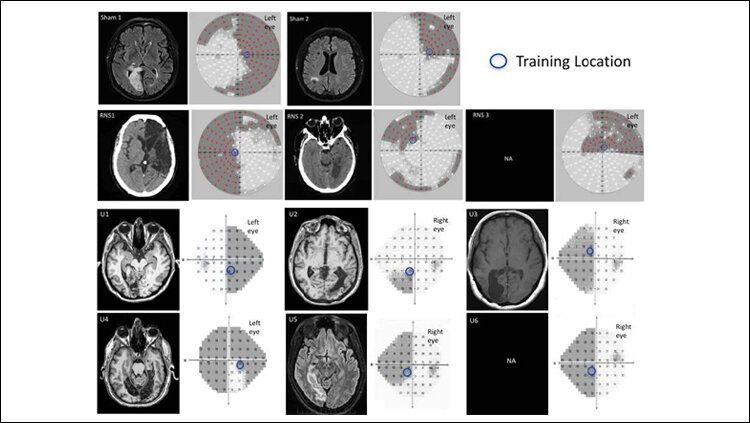A new theoretical model may help explain the shocking onset of superconductivity in stacked, twisted carbon sheets.
An exoplanet smaller than Neptune with its own atmosphere has been discovered in the Neptunian Desert around its star by an international collaboration of astronomers, with the University of Warwick taking a leading role.
The rogue planet was identified in the new research, led by Dr Richard West including Professor Peter Wheatley, Dr Daniel Bayliss and Dr James McCormac from the Astronomy and Astrophysics Group at the University of Warwick.
NGTS is situated at the European Southern Observatory’s Paranal Observatory in the heart of the Atacama Desert, Chile. It is a collaboration between UK Universities Warwick, Leicester, Cambridge, and Queen’s University Belfast, together with Observatoire de Genève, DLR Berlin and Universidad de Chile.
Men should favour weight lifting and running over cycling in order to preserve their bones, scientists have said after a study suggested brittle bone disorders are more common than previously thought.
Scientists measuring the bone density of men and women between the ages of 35 and 50 found 28 per cent of men showed precursor signs of osteoporosis, compared to 26 per cent of women.
The results are surprising because the debilitating condition, which affects around three million people in the UK, is more commonly associated with women than men.
Our civilization is made up of countless individuals and pieces of material technology, which come together to form institutions and interdependent systems of logistics, development and production. These institutions and systems then store the knowledge required for their own renewal and growth.
We pin the hopes of our common human project on this renewal and growth of the whole civilization. Whether this project is going well is a challenging but vital question to answer.
History shows us we are not safe from institutional collapse. Advances in technology mitigate some aspects, but produce their own risks. Agile institutions that make use of both social and technical knowledge not only mitigate such risks, but promise unprecedented human flourishing.
Watch this video where we investigate this landscape, evaluate our odds, and try to plot a better course.
Samo Burja is a sociologist and the founder of Bismarck Analysis, a firm that analyzes institutions, from governments to companies. His research work focuses on the causes of societal decay and flourishing. He writes on history, epistemology and strategy.
For decades, physicists, engineers and mathematicians have failed to explain a remarkable phenomenon in fluid mechanics: the natural tendency of turbulence in fluids to move from disordered chaos to perfectly parallel patterns of oblique turbulent bands. This transition from a state of chaotic turbulence to a highly structured pattern was observed by many scientists, but never understood.
At EPFL’s Emerging Complexity in Physical Systems Laboratory, Tobias Schneider and his team have identified the mechanism that explains this phenomenon. Their findings have been published in Nature Communications.
Practice results in better learning. Consider learning a musical instrument, for example: the more one practices, the better one will be able to learn to play. The same holds true for cognition and visual perception: with practice, a person can learn to see better—and this is the case for both healthy adults and patients who experience vision loss because of a traumatic brain injury or stroke.
The problem with learning, however, is that it often takes a lot of training. Finding the time can be especially difficult for patients with brain injuries who may, for instance, need to re-train their brains to learn to process visual cues.
But previous examination of the fungal “molecular clock,” using DNA-based methods, suggested that fungi may have evolved much earlier, between 760 million and 1.06 billion years ago. Extracted from Arctic Canadian shales, the newly discovered billion-year-old fossilized fungal spores and hyphae (long thin tubes) plug the gap in the fossil record and suggest that fungi may have occupied land well before plants.
The fungal fossils were found in rocks that were probably once part a shallow-water estuary. Such environments are typically great for fungi thanks to nutrient-rich waters and the build up of washed-up organic matter to feed on. The high salinity, high mineral and low oxygen content of these ancient coastal habitats also provided great conditions to perfectly preserve the tough chitin molecules embedded within fungal cell walls that otherwise would have decomposed.
While it’s not certain whether the newly-discovered ancient fungi actually lived within the estuary or were washed into the sediments from the land, they show many of the distinctive features you’d expect in modern terrestrial fungi. The germinating spores are clearly defined, as are the branching, thread-like tubes that help fungi explore their environment, named hyphae. Even the cell walls are distinctively fungal, being made up of two clear layers. In fact, if you didn’t know they were so old, you’d be hard-pressed to distinguish them from modern fungi.
An artificial intelligence firm says its heads-up display for astronauts could help them better manage complex space missions.
Hypergiant Industries built an “Iron Man”-inspired space helmet called HyperVSR, which can display details like an astronaut’s vital signs or other information about a mission. CEO Ben Lamm told Futurism that it may improve astronaut safety by putting more information at crew members’ fingertips and cutting down on how much they have to maneuver in a spacesuit.
“Space is an unpredictable environment, where challenges can change dramatically over the course of just a few minutes,” Lamm said. “During these situations, it’s paramount that astronaut safety is never in question. We’ve designed our helmet to enable astronauts to quickly gather information about a situation, as well as assess their own health, for enhanced decision-making even during emergencies.”









